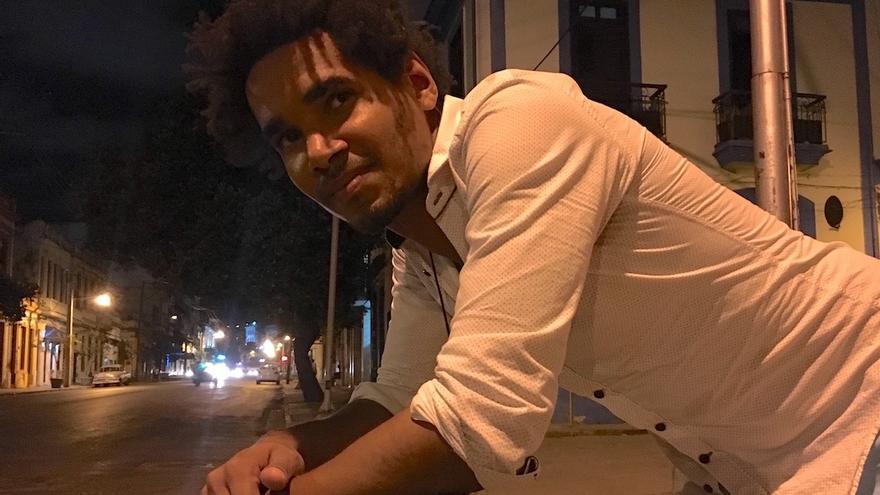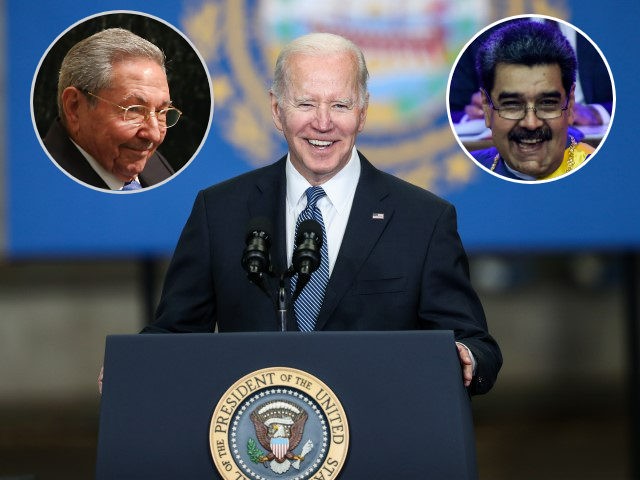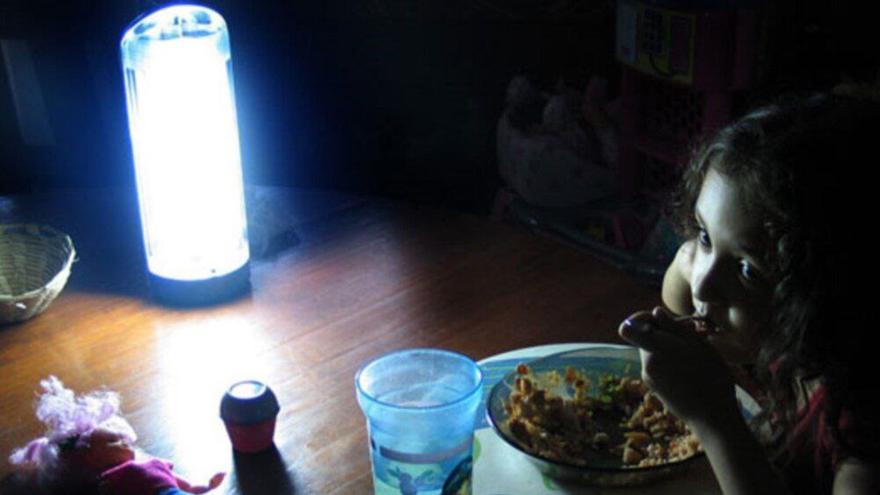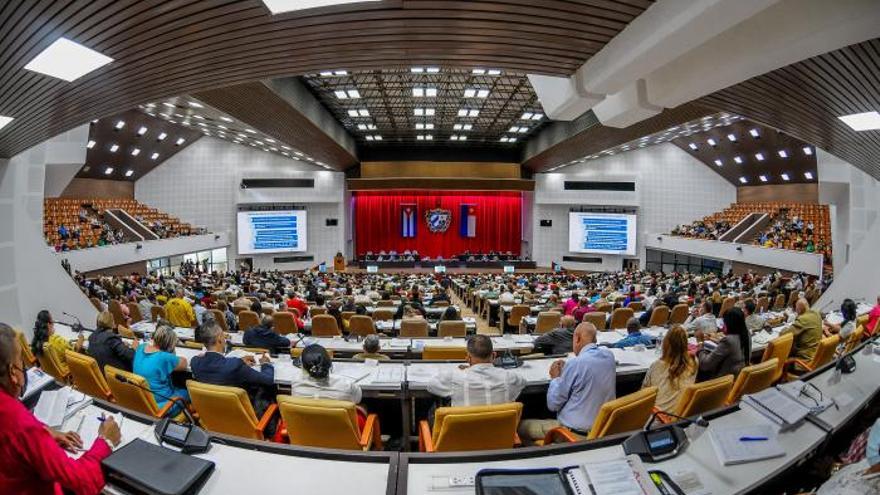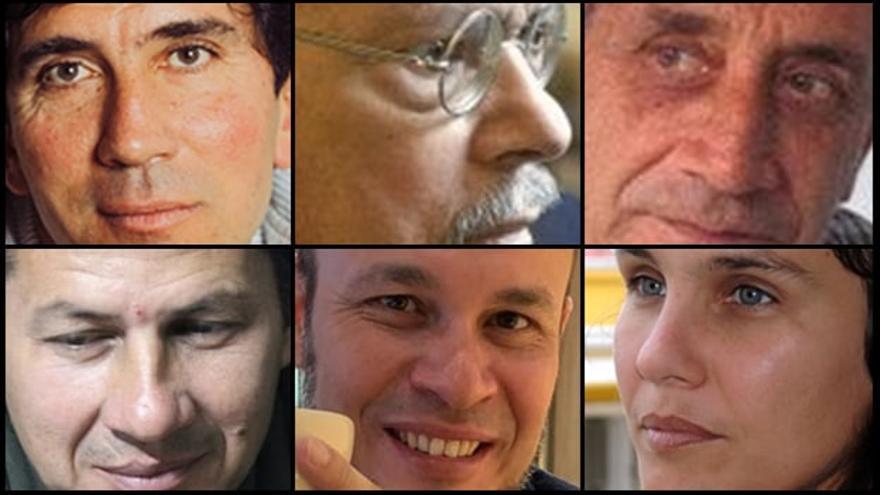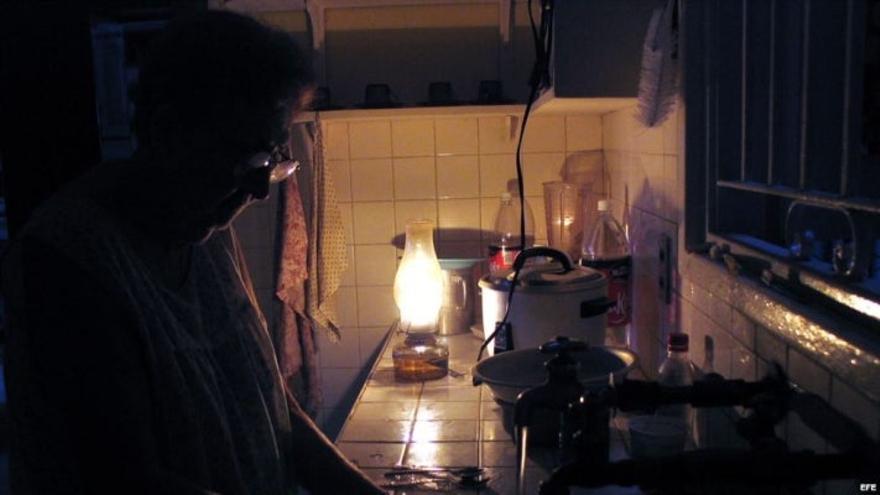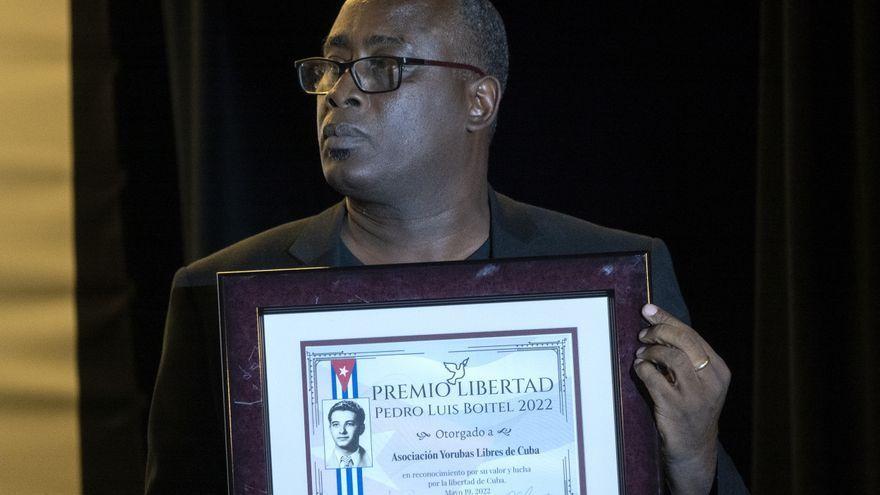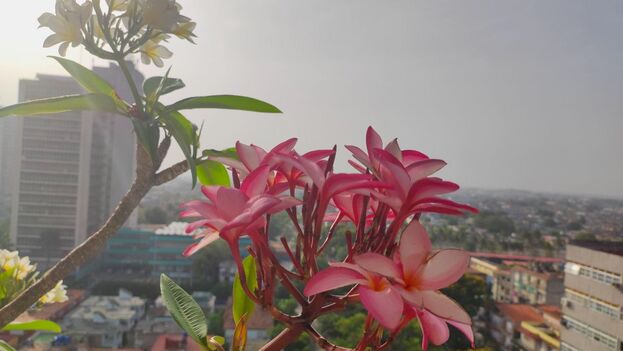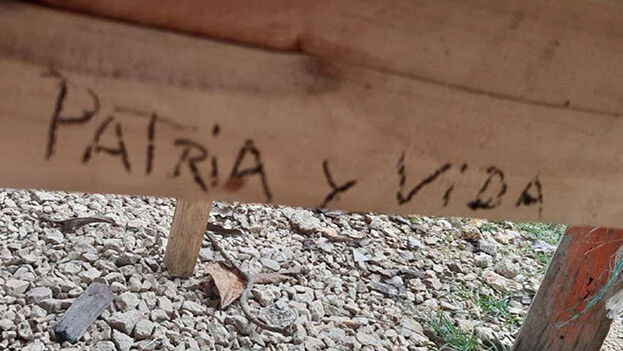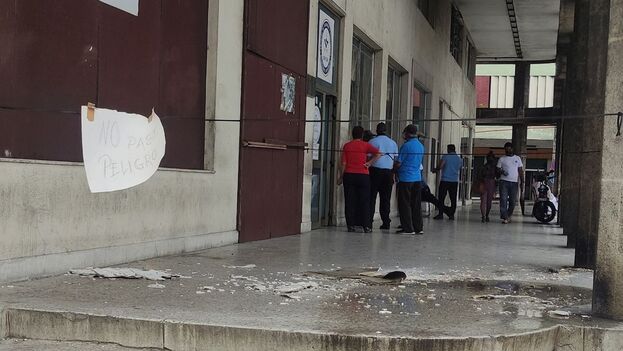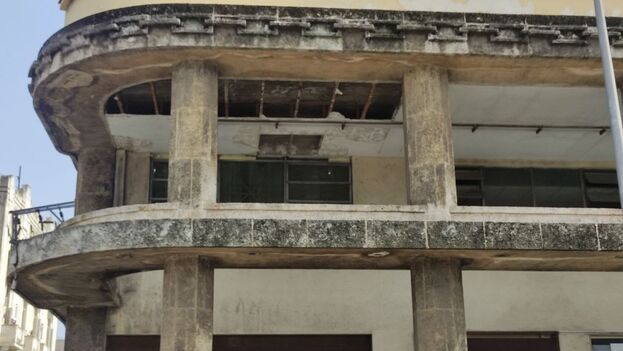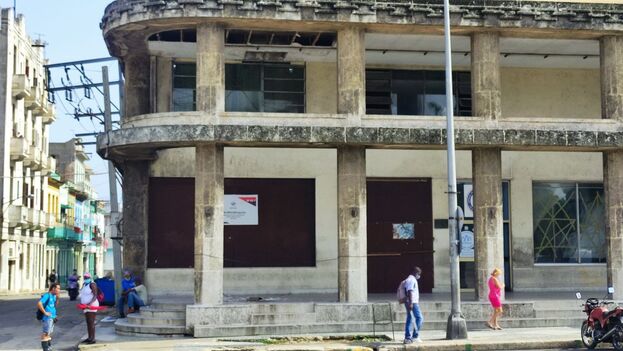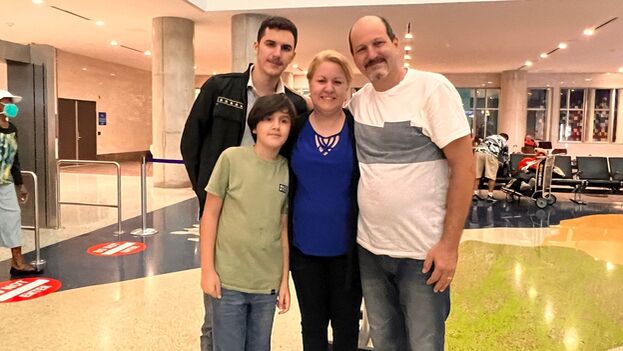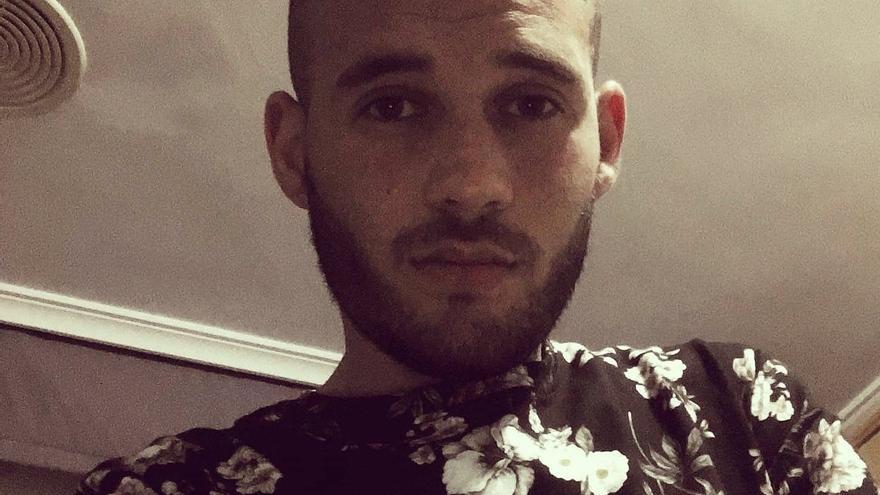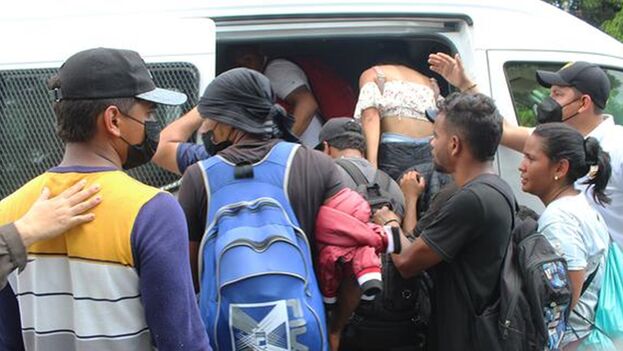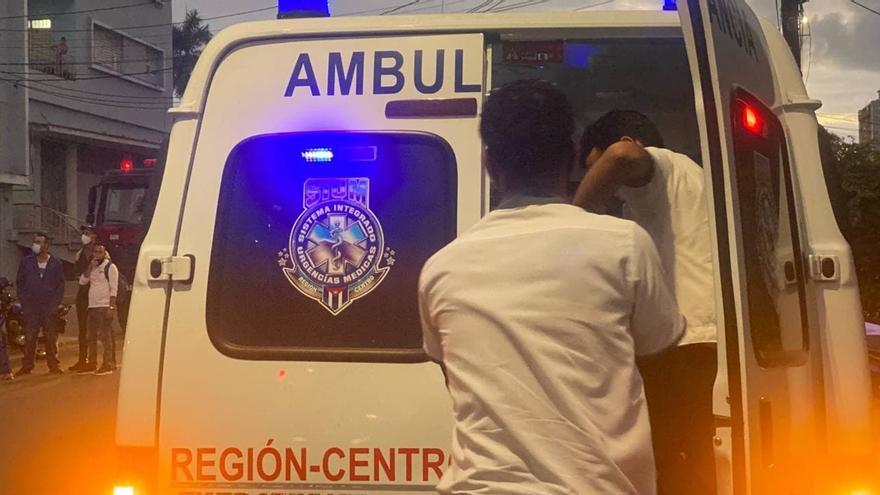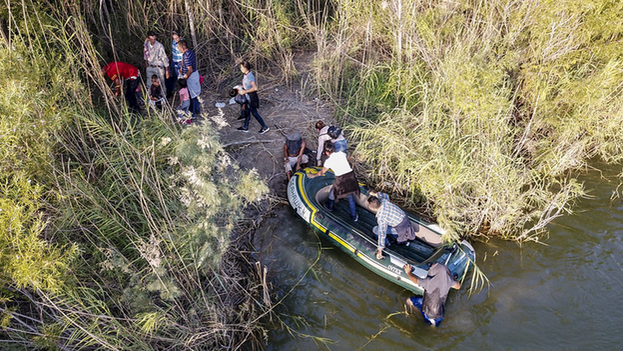
![]() 14ymedio, Alejandro Mena Ortiz, 1 May 2022 — We were very afraid in that thicket. We didn’t know what was going to happen, we didn’t have phones, helicopters were flying overhead. If they saw us, we had to run, but… there was nowhere to run. We were there for three or four hours. I wrote with a toothpick on a nopal cactus plant “patria y vida” [homeland and life] and drew a little Cuban flag. If a Cuban comes here tomorrow and sees this plant, he will know that another one of his compatriots was here.
14ymedio, Alejandro Mena Ortiz, 1 May 2022 — We were very afraid in that thicket. We didn’t know what was going to happen, we didn’t have phones, helicopters were flying overhead. If they saw us, we had to run, but… there was nowhere to run. We were there for three or four hours. I wrote with a toothpick on a nopal cactus plant “patria y vida” [homeland and life] and drew a little Cuban flag. If a Cuban comes here tomorrow and sees this plant, he will know that another one of his compatriots was here.
After three or four hours, the truck came again and someone shouted the password to the code they had assigned to us and we had to come out running. At that time, we turned into a group of 40, at least, because they had brought others who had the same instructions, and that’s when the chaos started.
Everyone started running through the thorns to try to get a seat in the truck. Fortunately, my Nicaraguan friend was grasping me, because all the while it felt as if I was about to fall down, especially when the driver accelerated.
When we were very close to the river, three or four people arrived, one of them with a six-person capacity raft. They told fifteen of us to get in. I placed myself in the group with the first ones, because I thought that my female Honduran friend was part of that group. However, it didn’t turn out that way. When I looked back, my friend had already remained behind and I would never know what happened to her.
They explained to us what the crossing entailed: they were going to throw the raft into the river, we were going to have to get in and kneel down, so that the 15 of us and the man who was rowing could fit. And that’s what we did. We had to get wet, up to our ankles more or less, and the water was very, very cold. We got in, the man got in, the guide too, in the front, and all of us started to row with our hands so it would take less time. We rowed and rowed… until we reached the other shore.
We quickly walked a few meters. I threw myself to the ground, sank to my knees, pressed my forehead to the ground and was grateful for having arrived alive, not having been scammed, not having been kidnapped and many other things that many migrants unfortunately experience throughout their journey to the United States.
Tears came to my eyes and I called my cousin to tell him that I had already arrived, but I couldn’t even speak, because I had a lump in my throat. continue reading

There were many emotions at that moment, but, returning to reality, the men who were helping us cross from the other side of the river yelled at us: “Run, run!” We thought that the immigration officers were coming and we started to run. We went up some hills, down some hills, until we reached a place and said: “Let’s stay here and see if the others come.” But they never did.
When immigration agents arrived, they stopped about 50 meters from us. One, who sounded Mexican, says: “Come, come, come closer, don’t be afraid.” We started running again, because we thought it had to be the Mexicans, but in the end, we heard them speaking to the officers in English and we finally surrendered.
That was very emotional. There were soldiers with AR15 machine guns, but they made nice gestures, like welcoming us, just like the Border Patrol, who were very kind.
They took us to a baseball stadium, where they took our information. One of them, Officer Alvarado, distributed us in vans and, along the way, asked us about our situation, our countries, and we told him. He was very sympathetic.
At the stadium, they removed our belts and shoelaces and took us to a location in McAllen, Texas, where we were sorted, fingerprinted and photographed. They searched us and threw almost everything in the trash, except for the essentials. Then they placed more than 66 people in some cells they call ice coolers for about 24 hours. Horrible, very cramped.
Some Cubans tried to ask me to come closer, but we couldn’t, we didn’t fit. In the end, thanks to them, I was able to sit on a small bench and make room for my Nicaraguan friends. One of the Cubans was from Holguín and the other from Cienfuegos. They told me that one normally stays there for about three days and then goes out with a phone so you can be in contact every week with an immigration officer, to whom you have to send a current photo and the location of the device. In other words, as if you had an electronic ankle bracelet, because you cannot move away from the delimited area.
The food was pretty good, so I thought we could hold our own, but happiness in a poor man’s house is short-lived. They didn’t let us out with a phone, period. They put us on a bus, almost 60 of us, back to another ice-cooler. And the Border Patrol officer intimidated us. In his rather broken Spanish, he said, “Who are the Cubans here?” Almost 20 of us raised our hands. Then he added: “Ok, just so you know, I don’t like Cubans and I’m the boss here. Cubans think that this is Disneyworld, so whoever cracks a joke with me, I’m going to put his face against the floor.”
There are cold or indifferent guards, but not one like this one, none. He had to check on me and even kicked me in the ankle so that I would separate my feet even more. I decided to shut up and suck it up, because, if I had protested, it would have been worse. But he had no right; he did ugly things to us and we felt afraid. He slammed a Nicaraguan into the ground and locked him up because he tried to ask him something. To an older man, who was not feeling well and asked to go to the infirmary, he said: “Drop dead.”
The day they took me out of that “ice-cooler” was my birthday. I felt very bad because they handcuffed us, and I had never been put in handcuffs, not even in Cuba
In this prison, in this cooler, we spent five days that traumatized me. The diet was meager: a burrito in the morning, juice and some cookies at noon, another juice and other cookies at six in the afternoon, another burrito at ten at night and that was it. I lost 17 pounds, but another guy, who stayed for nine days, lost 20. We know this because they weighed us at the next place when we arrived. The change was incredible.
In this other place there were quite a few Cubans, and one day, I heard one debating with a Venezuelan, to whom he said: “You can criticize anything in my country, but not its education, because it is the best in the world.” I slowly turned to where that young man was and faced him. I told him that that was a lie, that how could he say that after having fled from a dictatorship, he was so indoctrinated.
Many there supported me and, well, we had a discussion, just a debate, nothing violent.
The day they took me out of that cooler was my birthday. I felt very bad because they handcuffed us, and I had never been handcuffed, not even in Cuba. They put handcuffs on my hands, feet and waist: they chained us up and made us go out towards a bus where they took us to a closed prison. I did not understand that, I did not expect it. It seems they were doing this because there was such a large volume of migrants.
There, we feel imprisoned, but with better conditions. Much better. We had a dormitory with 80 bunk beds. Hot showers too, and 55-inch televisions in the bedroom. In addition, the guards treated us very well. Many hardly spoke Spanish, but I acted as an intermediary.
In that place, I was able to call my cousin and tell him: “Buddy, I’m in prison, buddy, I’m in prison,” and I couldn’t speak anymore, because I burst into tears.
Tomorrow:
Final chapter: A few days in jail in Texas and the unknown taste of freedom
Translated by Norma Whiting

